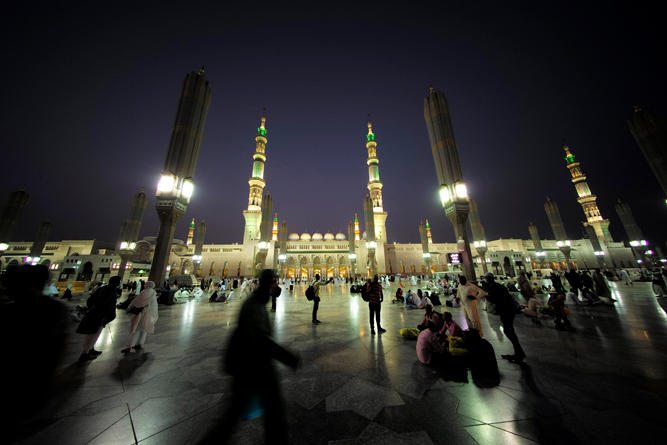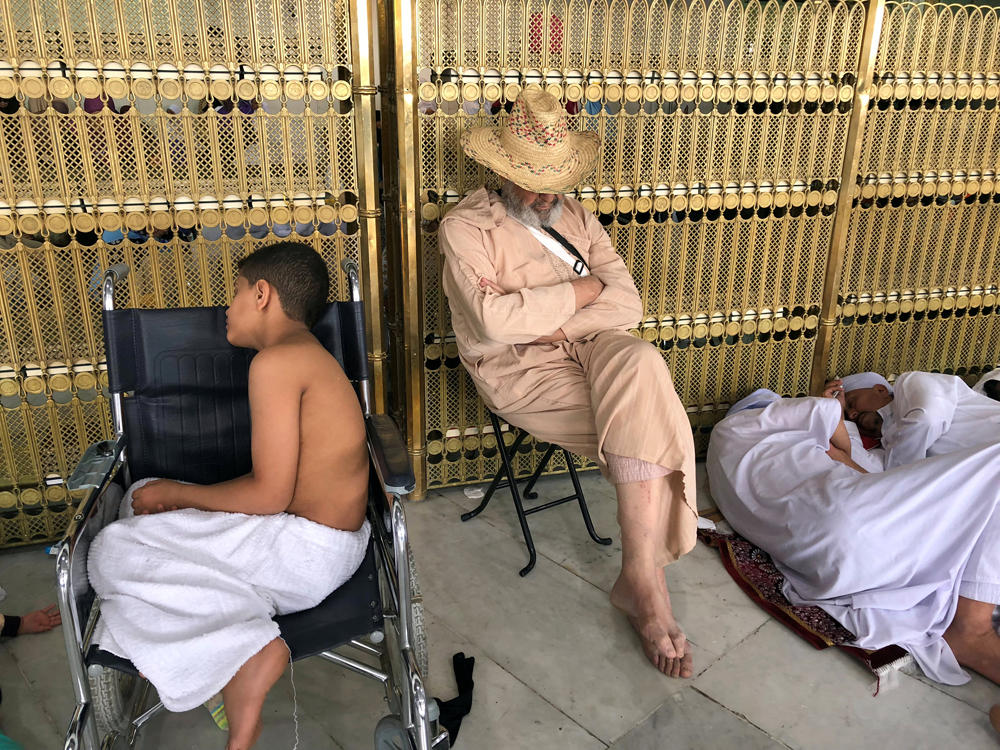Health and safety tips for Muslim pilgrims

Author: Arab NewsSun, 2018-05-27 19:41ID: 1527445254343656200
Performing Umrah and praying at the Grand Mosque during Ramadan leads to a much greater movement of vehicles and pedestrians on the roads leading to the central area surrounding the Grand Mosque. This requires exceptional organizational procedures for transporting pilgrims and worshipers and managing their movements inside the Grand Mosque and on the roads leading to it.
Our goals are to maintain your safety and to facilitate your Umrah rituals with ease, tranquility and placidity.
How to reach?
The density of pedestrian traffic is very high on all roads leading to the Grand Mosque and continues for hours before, during and after prayers all the time.
To keep your safety and facilitate your way to the central area surrounding the Grand Mosque, the roads in the central area surrounding were specified for the pedestrian movement during the time of prayers. Pilgrims and worshipers are transported to the central area around the Grand Mosque and their accommodation using public transport buses from King Abdulaziz International Airport in Jeddah and 13 parking spaces to nine other public transport stations around the Grand Mosque.
Vehicles driven by drivers seeking to perform Umrah must park at the parking areas at entrances to Makkah and use public transport to their destination.
Traffic men are stationed at 34 locations on the roads leading to the Grand Mosque to follow up on the traffic status and take all necessary measures to keep pedestrians safe. They compel the vehicles used to transport worshipers and pilgrims to Makkah to go to public or private parking spaces. They prevent all types of vehicles from parking on the roads and in locations affecting pedestrian safety. They prevent motorbikes and bicycles from using roads in the central area, and to be used for charge-paid transportation.
You can reach the Grand Mosque using one of the following options:
Using public transport buses from King Abdulaziz International Airport to public transport stations around the Grand Mosque.
Using transport services between parking spaces inside the Holy Places and the public transport stations in the central region.
Using taxis to the nearest site of the Grand Mosque or to your place of accommodation.
Using private cars driven by non-pilgrims to the nearest site of the Grand Mosque or to your place of accommodation.
Walking from your place of accommodation in the central area and adjacent neighborhoods.
What you should know before heading to the Grand Mosque
The absorptive capacity defines the number of visitors who can perform prayers in the Grand Mosque and in its precincts. This capacity decreases when performing the “Taraweeh” and “TaHajjud” prayers to enable pilgrims to perform “Tawaaf” and “Saai,” requiring the evacuation of the “Mataf” and the “Masaa.”.
Because of the large turnout of pilgrims and worshipers and with the view of maintaining their safety, all roads leading to the Grand Mosque are reserved for pedestrians before prayers and one hour or more after, according to the number of pedestrians. This period is extended to two hours during Friday prayers, and for prayers during the last 10 days of Ramadan and Fitr prayers.
How to move in the Grand Mosque and the surrounding area:
The external and internal area of the Grand Mosque is equipped with pedestrian corridors that cannot be used for sitting, waiting or praying.
Illuminated signboards: When you enter the gates you will find signboards. When they light up in green it means that you have access to the Grand Mosque through this gate, but when it lights up in red, there is no access through this door owing to congestion.

Safety tips:
Move calmly, abide by traffic directions, pay attention to the elderly and other worshipers and pilgrims, and follow the instructions of the security personnel.
Move slowly when heading to public transport stations immediately after the prayer. Maintain your calm and abide by the instructions of security personnel.
Avoid obstructing pedestrian traffic by gathering in the external areas of the Mosque or by stopping by street vendors.
Pilgrims cannot perform their prayers at the doors of the Grand Mosque, near the entrances and exits of escalators, on the pedestrian corridors, on the roads and streets leading to the Mosque, on the entrances and exits of car tunnels and in front of toilets.
General instructions:
Some children who are taken to the Grand Mosque lose their parents, thus there is a dire need to monitor and take good care of them.

Pilgrims and worshipers must stay away from work or maintenance areas inside and outside the Mosque.
Smoking, begging, taking pictures, or selling goods are prohibited inside the Mosque and surrounding areas.
Electrical plugs reserved for maintenance work cannot be used for personal purposes to avoid any electrical short-circuit that may affect the signboards in the Grand Mosque.
It is prohibited to play with escalators, regular stairs or carts inside the Grand Mosque.
It is prohibited to tamper with any of the firefighting tools such as the fire extinguishers, firefighting water hoses or fire alarms.
Prohibitions:
Carrying and entering weapons and all types of sharp tools into the Grand Mosque and its squares.
Conducting any act that would affect the pilgrims and worshipers safety and tranquility or would hinder facilitating the performance of Tawaf, Saai and praying.
Entry of motorcycles and bicycles into the areas of the Grand Mosque is prohibited.
Moving personal belongings to the Grand Mosque and its squares, or suspending them on the windows of the Grand Mosque from inside and outside, or leaving them in the courtyard of the Grand Mosque. Such belongings can be kept in the boxes allocated to this end in the courtyards.



 Main category: Saudi ArabiaTags: Ramadan 2018UmrahpilgrimageMakkahGrand Mosque in Makkah 8,700 electric cars, wheelchairs for pilgrims arranged in MakkahMinistry of Hajj announces registration dates for Saudi Arabia-based pilgrims182,000 products seized during pilgrimageA successful Haj pilgrimage
Main category: Saudi ArabiaTags: Ramadan 2018UmrahpilgrimageMakkahGrand Mosque in Makkah 8,700 electric cars, wheelchairs for pilgrims arranged in MakkahMinistry of Hajj announces registration dates for Saudi Arabia-based pilgrims182,000 products seized during pilgrimageA successful Haj pilgrimage
[contf]
[contfnew]

Arab News
[contfnewc]
[contfnewc]




